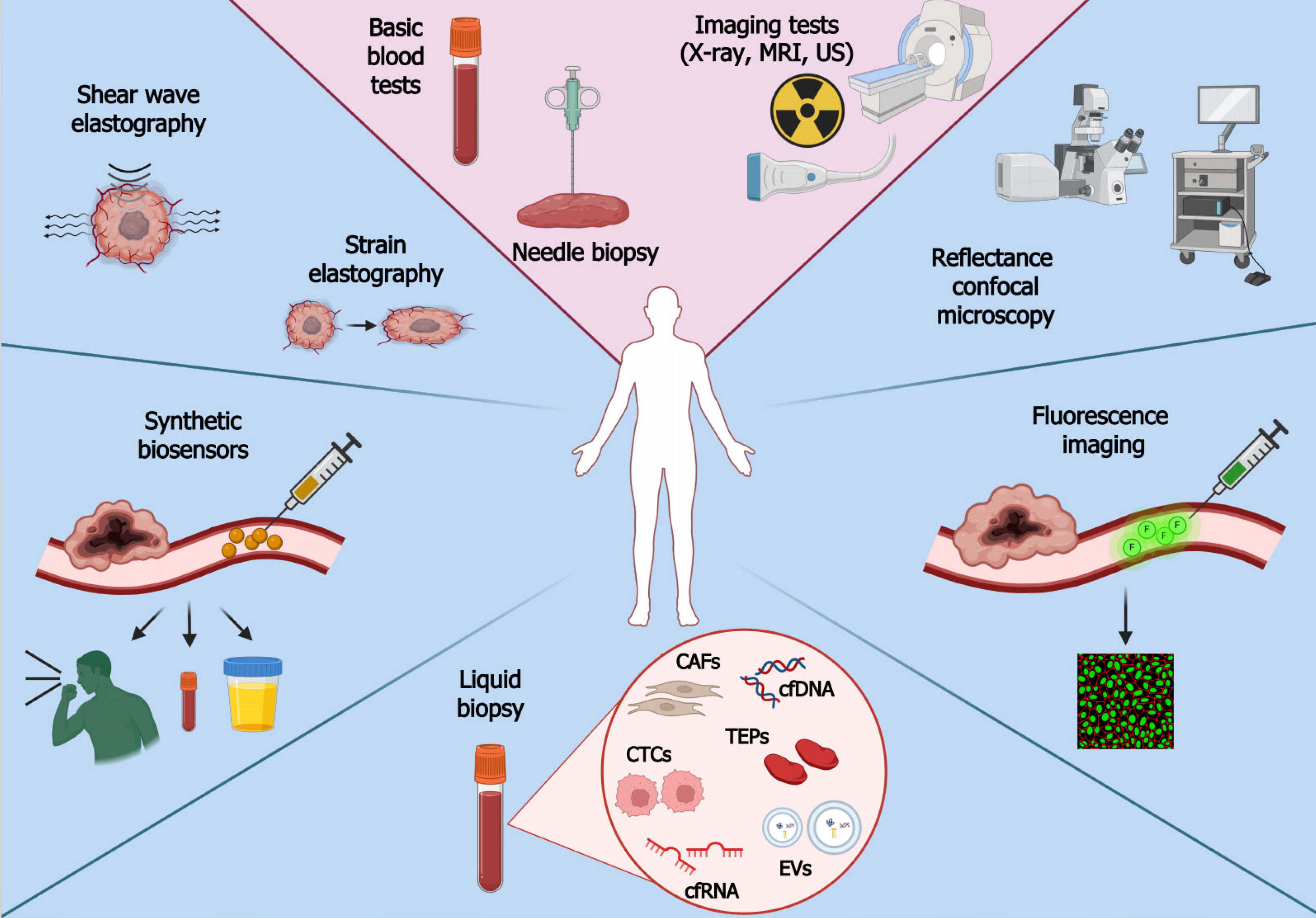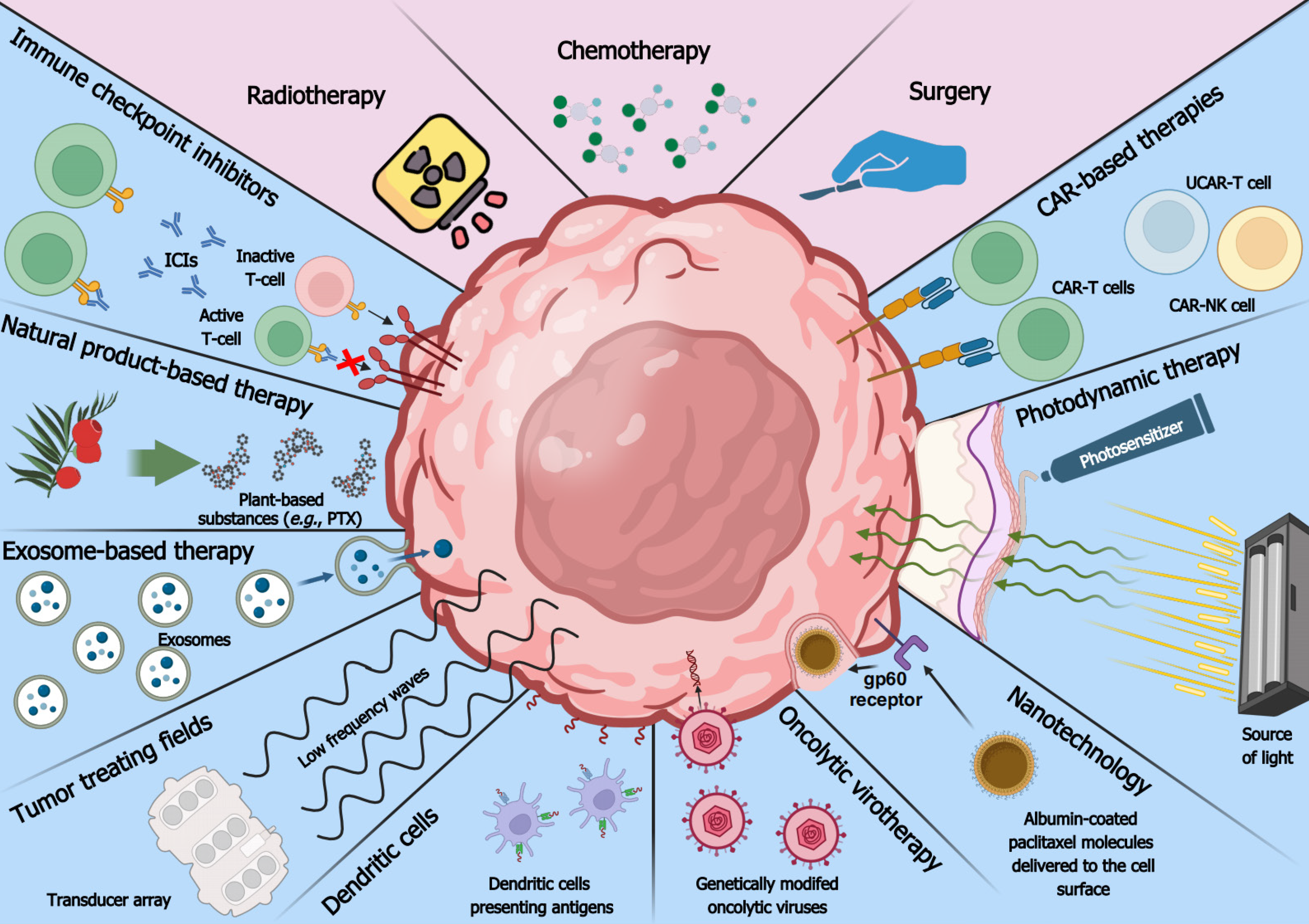Copyright
©The Author(s) 2024.
World J Methodol. Jun 20, 2024; 14(2): 92982
Published online Jun 20, 2024. doi: 10.5662/wjm.v14.i2.92982
Published online Jun 20, 2024. doi: 10.5662/wjm.v14.i2.92982
Figure 1 Conventional and modern methods of cancer detection.
The diagnostic path begins with learning the medical history of a patient, followed by performing basic blood tests (e.g., complete blood count, creatinine level, liver function test) and imaging tests (e.g., X-ray scan, ultrasound, magnetic resonance spectroscopy) to indicate where cancer may be located. Afterwards, the patient is scheduled for a needle biopsy. Prompt initiation of diagnosis is crucial since delayed cancer detection entails higher costs of treatment and hospitalization. Novel cancer detection methods include liquid biopsy, elastography, synthetic biosensors, fluorescence imaging, and reflectance confocal microscopy. Standards of cancer detection are located in a light pink area, whereas novel methods are placed on a light blue background. Figure created with BioRender. CTCs: Circulating tumor cells; CAFs: Cancer-related fibroblasts; TEPs: Tumor-educated platelets; cfDNA: Cell-free DNA; cfRNA: Cell-free RNA; EVs: Extracellular vesicles; US: Ultrasound (sonogram); MRI: Magnetic resonance imaging.
Figure 2 Conventional and modern methods of cancer therapy.
Chemotherapy, radiotherapy, and surgery are standard approaches that can be used in combination. Chemotherapeutics are harmful to both cancer cells and normal cells, negatively affecting the quality of life. Radiotherapy counteracts cancer via ionizing radiation that deposits high-energy beams in cells. Surgery does not guarantee improvement in the patient’s health and carries several risks such as bleeding and damage to surrounding organs and tissues. The current standard of care is unsatisfactory in most cancer types, necessitating the use of novel methods such as oncolytic virotherapy, exosome-based therapy, nanotechnology, dendritic cells, CAR-based therapies, immune checkpoint inhibitors, natural product-based therapy, tumor treating fields, and photodynamic therapy. Figure created with BioRender. CAR: Chimeric antigen receptor; UCAR: Universal CAR; NK: Natural killer; PTX: Paclitaxel.
- Citation: Gromek P, Senkowska Z, Płuciennik E, Pasieka Z, Zhao LY, Gielecińska A, Kciuk M, Kłosiński K, Kałuzińska-Kołat Ż, Kołat D. Revisiting the standards of cancer detection and therapy alongside their comparison to modern methods. World J Methodol 2024; 14(2): 92982
- URL: https://www.wjgnet.com/2222-0682/full/v14/i2/92982.htm
- DOI: https://dx.doi.org/10.5662/wjm.v14.i2.92982










